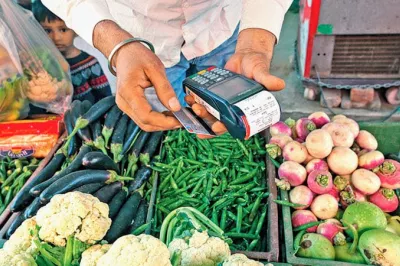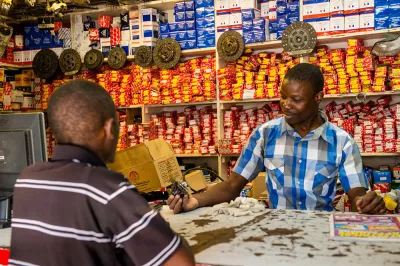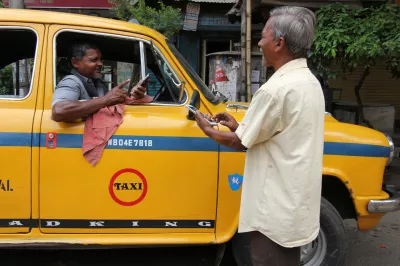Where cash is entrenched and largely works well, the real value proposition for digital retail payments may lie less in facilitating the transactions themselves than in building a suite of services on top of the transactions that meet the real needs of small businesses and their customers. Here, a whole universe of opportunity awaits where cash cannot compete and the digital medium adds genuine value.
If what you’re selling merchants is a solution to their “cash problem,” don’t bother

DFS providers too often underestimate the strengths of cash in merchant payments. Conversely, they also tend to overestimate just how compelling the core value proposition in their merchant payments product will be to merchants and their customers.
Meeting with DFS providers in many countries who have launched or plan to launch merchant payments services, we have largely heard the same pitch. For merchants, the core message tends to be that enabling customers to pay digitally will help grow the businesses and that paying staff or suppliers digitally will be far more convenient. For consumers, the pitch mostly emphasizes the convenience of digital payments over cash, together with a vague mix of security benefits and a cool factor.
Unfortunately, this pitch often fits poorly with the reality of the users. Cash works fine. Few customers ask to pay digitally. Merchants’ business processes tend to be built around cash, so digital payments often require merchants to change how they do things — perhaps even operate parallel systems for cash and digital — which creates headaches. The same goes for staff and suppliers: Coca Cola doesn’t have a mobile money account through which you can pay for new inventory, and most people even in relatively successful mobile money markets still prefer to be paid in cash.
For customers, merchant payments are not terribly convenient unless they can use them at most of the places where they make payments, but that is very difficult for providers to achieve. The fact that customers must first deposit money into the account does not make it any more convenient.
This poor fit is often exacerbated by features of the payments product itself, including the fee structure, the user experience, and the maturity of the wider payments ecosystem. For these reasons, it is easy to see why digital merchant payments pitches are often not very compelling. So what should providers do?
Does your offering really help your customers?
This question may seem obvious, but too many merchant payments offerings seem to have been developed in a boardroom rather that in conversation with users. Providers need to acknowledge the strengths of cash to iron out obvious frictions in digital payments and to ensure that their products live up to their pitches.
Most importantly, DFS providers have to give their customers a stronger stake in choosing a payment method. The potential cost savings and revenue opportunities from digitizing merchant payments are real and significant. The problem is that those gains tend not to accrue to the merchants or their customers but to providers and their partners. In other words, the very people who are deciding whether to use cash or digital payments — on whose choice the merchant payments business depends — have no stake in that decision. That has to change.
By realizing some of the financial gains from digitization and feeding them back to merchants and customers, providers can better align incentives in favor of digital payments on both sides of the market. The goal should be to make digital not merely as good as cash, but clearly better than cash in at least one respect.
The real value for merchants lies beyond payments
Ironically, a merchant payments solution should not focus too much on the payments part. Most merchants do not have a payments problem. To be compelling to merchants, it needs to offer solutions to the problems that they do have. And that’s actually not very difficult.

Merchants tend to have a clear set of genuine pain points in running their businesses that are remarkably similar across countries and continents. Managing customer relationships, building loyalty, handling store credit, managing inventory, paying suppliers, accessing working capital, tracking sales, incentivizing staff — the list goes on.
Each of these pain points presents an opportunity for a payments provider to add genuine value for merchants by building a simple solution that rides on top of digital payments. We offer several concrete solutions in the value-added services (VAS) playbook that follows. This is not only a far better way to get merchants to drive digital payments, it also offers new opportunities to monetize the service. As we discuss in “Don't Charge Transactions Fees,” offering VAS is a far better revenue model than charging transaction fees.
Some providers will say they intend to build this type of solution later on, but first they need to focus on building scale. By launching without the truly compelling parts of the value proposition, however, chances are they will not reach scale and “later” will never come.
Loyalty models can create value for consumers
Consumers may offer fewer opportunities than merchants for providers to create a compelling proposition by building VAS on top of the payments stream. They are more diverse and share fewer obvious pain points linked to payments.
The most obvious option is some form of loyalty model that rewards customers for paying digitally. Loyalty has been used successfully by payments providers the world over for decades, not least with credit cards. There are different types of models, and we offer an overview of the space, takeaways for mobile money providers, and a hands-on playbook of examples.
Another option is to build the type of personal financial management tools that are becoming increasingly popular in advanced economies. Lower financial and actual literacy levels will limit how sophisticated this can be in developing markets. But a simple tool to see, plan, and monitor spending could be very valuable to many people, particularly if combined with basic financial education.
Finally, as digital credit products become more prevalent in many markets, feeding rich and relevant payments data into credit scores could provide a strong incentive for many customers looking to raise their loan limits. Indeed, credit products could well be the killer app for merchant payments.
|
Continue to: Opportunity | Business Model | Distribution |













